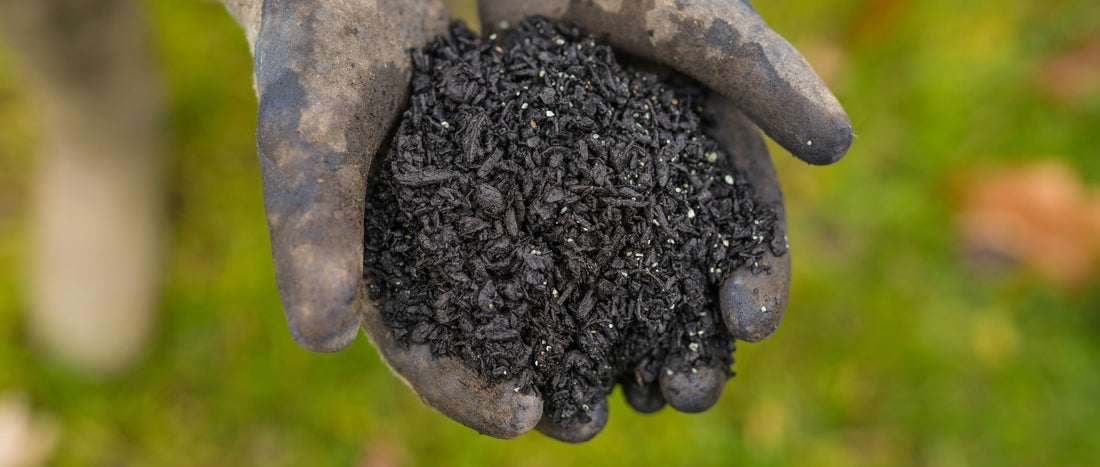
Gardening Tips for January: Incorporating Biochar into Your Gardening Routine
Share
As the days gradually begin to lengthen, it's the perfect time to start thinking about the garden again. A new year often brings new resolutions, and one of the best you can make is to better maintain your garden or even start growing your own produce. You may think that there’s not a lot that can be done at the start of the year, but there's plenty to do, especially if you're looking to enhance your garden's health with biochar.

What Can Be Done in the Garden with Biochar in January
Apply Biochar to Soil
One of the key gardening jobs in January is preparing your soil for the upcoming growing season. Biochar, a form of charcoal used to improve soil health, is an excellent amendment to add now. By incorporating biochar into your soil, you enhance its structure, increase water retention, and boost microbial activity. Simply spread a layer of Pure Biochar over your garden beds and work it into the soil with a spade or tiller.

Mix Biochar into Mulch
Another way to utilise biochar, if you have already added it into your soil, is by incorporating it into your mulch. This approach not only helps retain moisture but also gradually releases nutrients into the soil over time. Mix Pure Biochar with organic mulch materials like leaves or bark in a ratio between 1:10 and 1:20 and spread it around your plants and shrubs. Over time, some of the biochar will be naturally distributed throughout the soil by worms, enriching the soil and supporting healthy plant growth. This method is a great way to reapply biochar, even if your garden is already planted.
Biochar Lawn Care
If the weather permits, January is an ideal time to aerate your lawn. Using a garden fork or aerator, create small holes throughout the lawn to alleviate soil compaction. Once aerated, evenly apply Pure Biochar across the lawn. For smaller areas, you can do this by hand, while a spreader works well for larger lawns. This helps improve soil structure, enhances drainage, and promotes healthy root development in preparation for vibrant spring growth.

Preparing Your Raised Beds With Biochar
If you have raised beds, January is a great time to mix biochar into the soil. Start by evenly distributing Pure Biochar over the surface of the bed. Use a garden fork or spade to thoroughly mix the biochar into the top 6-12 inches of soil. This ensures that the biochar is well-integrated, preventing concentrated pockets that might affect plant growth. After mixing, water the bed thoroughly to help settle the biochar into the soil and promote interaction with the soil's microbial community. This preparation sets a strong foundation for the growing season, improving soil structure, nutrient retention, and moisture levels.
Add Biochar to Houseplants
During the winter, indoor heating can dry out houseplants. Adding pure biochar to your potting mix can help maintain moisture levels. Mix 10-20% of biochar by volume into the soil of your houseplants to keep them thriving through the colder months. Alternatively, you can use our Multi-purpose Biochar Compost to add essential nutrients as well.

Other Things to Do in the Garden in January
Prune Certain Fruit Trees
January is an excellent time to prune fruit trees like apple and pear. This encourages healthy growth and better fruit production in the coming seasons. Make sure to remove any dead or diseased branches and thin out overcrowded areas to allow more light and air to penetrate. However, make a note to avoid pruning when there is a frost or the temperature is close to freezing, as this can cause incisions to dry out stressing the tree and increasing the risk of damage.

Prune Rose Bushes
Rose bushes also benefit from pruning in January. Cut back to about a third of their size, focusing on removing old wood and shaping the plant. This helps to promote vigorous growth and an abundance of flowers in the spring. Again, this is a job to be avoided when the temperature is close to freezing.
Repurpose Your Old Christmas Tree
Don't just discard your old Christmas tree. There are several ways to repurpose it in the garden. You can shred the branches to use as mulch or create a wildlife shelter by laying the tree in a corner of your garden. The needles can also be used to create acidic mulch for plants like blueberries and rhododendrons. Or, if you are lucky enough to have a goat or alpaca in your life, they are big fans (as long as the ornaments and tinsel have been taken off).

Wildlife Care
January is a crucial month to support local wildlife as natural food sources become scarce. Keep bird feeders well-stocked with high-energy foods such as peanuts, sunflower seeds, and suet to help birds maintain their energy levels. Regularly clean and refill bird baths to provide fresh water, essential for hydration and bathing. Additionally, check and clean bird boxes to ensure they are ready for nesting in the spring. By taking these small steps, you can create a welcoming environment for wildlife during the harsh winter months.
In summary, January is a month full of potential for your garden. By incorporating biochar into your soil, mulch, and houseplants, you can significantly enhance your garden's health and productivity. If you do just one thing this month, make it applying biochar. It's a simple step that offers long-term benefits, helping your garden thrive throughout the year. Don't let the winter chill deter you - get out there and make the most of these early gardening opportunities.
You can learn more about the benefits of biochar in soil and how you can get started here.

